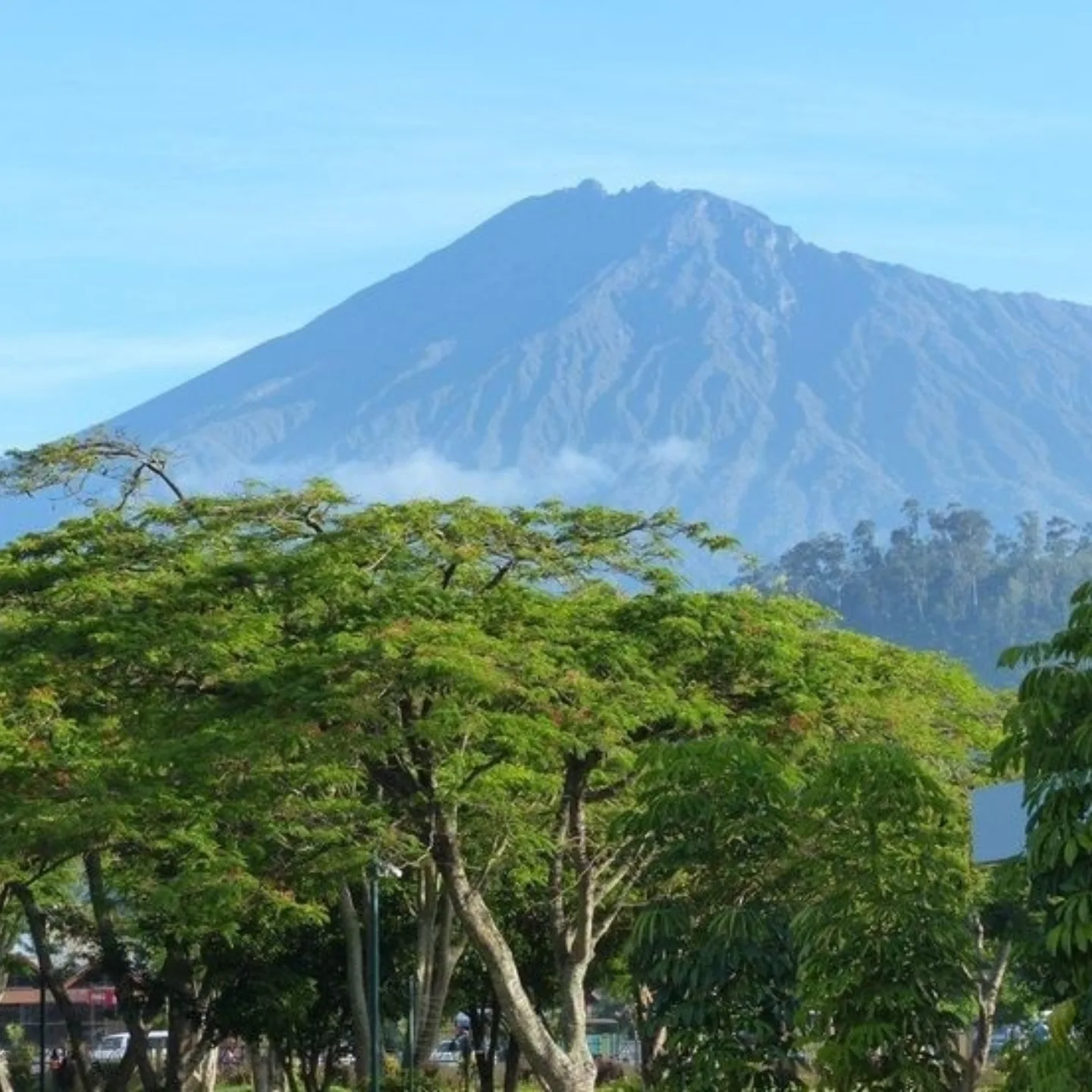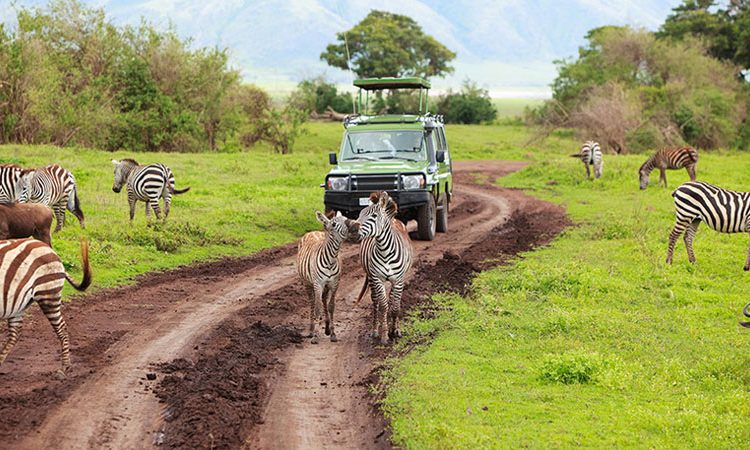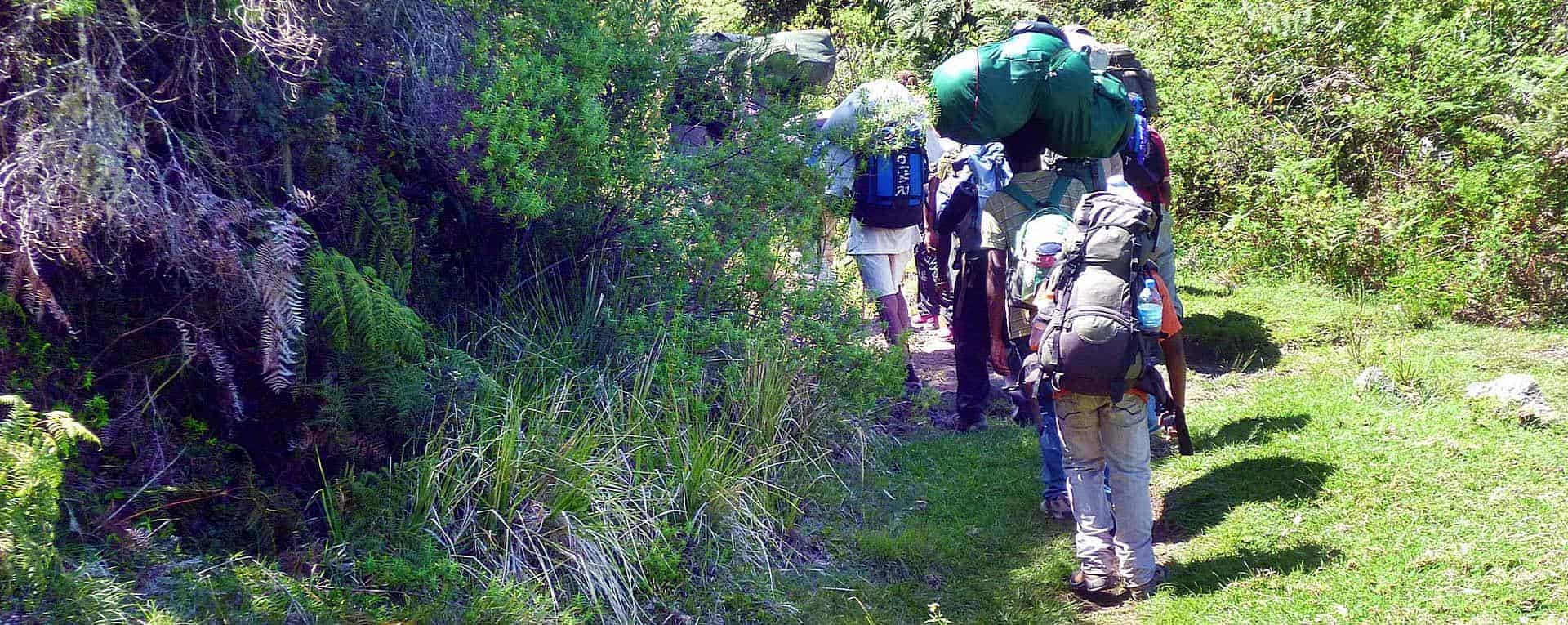Is Arusha National Park the Perfect Getaway for Nature Lovers?
Discover Arusha National Park!!
Arusha National Park is a protected area located in northern Tanzania, approximately 25 kilometers northeast of Arusha city. Covering an area of 552 square kilometers, the park is known for its diverse landscapes, including the forested slopes of Mount Meru, the Ngurdoto Crater, and the Momella Lakes. It is managed by the Tanzania National Parks Authority (TANAPA) and serves as an important ecological zone, home to a wide variety of wildlife such as giraffes, buffaloes, zebras, flamingos, and black-and-white colobus monkeys.
Despite its relatively small size, Arusha National Park offers a unique combination of mountain trekking, game viewing, birdwatching, and canoeing, making it one of the most versatile parks in Tanzania. It is also a popular starting point for tourists exploring the country’s Northern Safari Circuit.
Arusha National Park supports a wide variety of flora and fauna, including over 400 bird species and several mammal species such as giraffes, zebras, antelopes, hippos, and monkeys — particularly the rare black-and-white colobus monkey.
The park is managed by the Tanzania National Parks Authority (TANAPA) and plays a critical role in biodiversity conservation, ecotourism, and community development in the region. It also offers non-traditional safari activities, such as walking safaris, canoeing, and birdwatching, in addition to standard game drives.
Due to its proximity to Kilimanjaro International Airport and the city of Arusha, the park is often chosen as an introductory destination for travelers embarking on extended safaris in Tanzania.
![]()
What are the top tourism attractions in Arusha National Park?
-
Mount Meru
Mount Meru is Tanzania’s best-kept trekking secret. Rising majestically to 4,566 meters (14,980 feet), Mount Meru is the second-highest mountain in the country and the fifth-highest in Africa. Located within Arusha National Park, this dormant stratovolcano offers a breathtaking adventure for hikers seeking solitude, wildlife encounters, and jaw-dropping landscapes without the crowds.
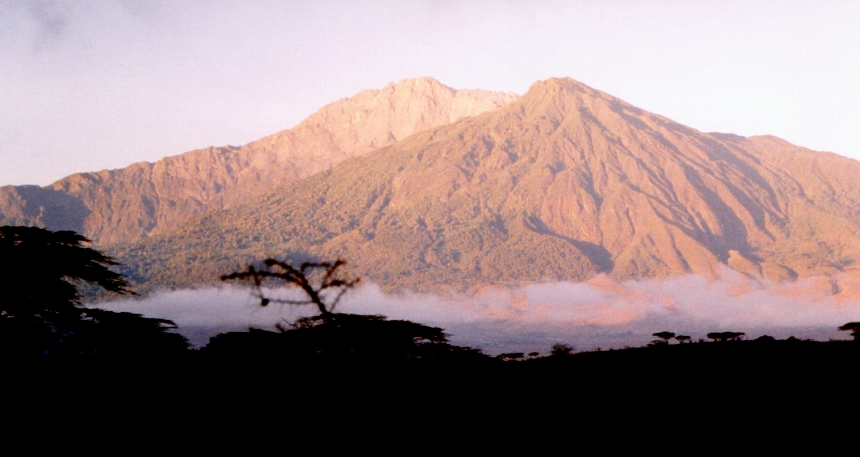
Mount Meru is unique for its stunning crater rim walk, offering hikers dramatic views of the volcanic crater and its central ash cone, which is a rare experience. Positioned within Arusha National Park, the trek provides opportunities for wildlife encounters with giraffes, buffaloes, and monkeys, adding a safari-like element to the climb. It’s an excellent acclimatization trek for those planning to summit Mount Kilimanjaro, offering a quieter, less crowded alternative to the more popular routes. The summit rewards trekkers with breathtaking sunrises over the Great Rift Valley and Mount Kilimanjaro. As a dormant stratovolcano, Mount Meru features active geological formations and offers a diverse range of ecosystems, from lush rainforests to alpine deserts, making it a dynamic and scenic adventure.
-
Ngurdoto Crater
The Ngurdoto Crater, located within Arusha National Park, is a stunning volcanic caldera that offers breathtaking views, diverse wildlife, and rich ecosystems. The crater, about 3.5 kilometers wide and 100 meters deep, features lush forested slopes and a grassy floor home to buffaloes, giraffes, elephants, and colobus monkeys. It’s a birdwatcher’s paradise and provides a variety of ecosystems, from rainforest to savannah. Less commercialized than other craters like Ngorongoro, Ngurdoto offers a peaceful, off-the-beaten-path adventure with scenic hikes around the rim, making it an ideal destination for those seeking tranquility and natural beauty.

Ngurdoto Crater, often referred to as the “mini Ngorongoro,” is a captivating natural wonder offering a serene and unspoiled experience. This collapsed volcanic caldera is surrounded by lush forests and provides spectacular views from the crater rim, where visitors can observe the dramatic landscape and the wildlife that inhabits the area. The crater floor, teeming with animals like buffaloes, giraffes, and elephants, contrasts beautifully with the dense forested walls. Its diverse ecosystems, ranging from rainforests to open grasslands, support a rich variety of flora and fauna, making it a perfect destination for wildlife enthusiasts and nature lovers seeking a quieter, more intimate adventure.
-
Momella Lakes
The Momella Lakes, located within Arusha National Park, attract tourism with their unique combination of stunning landscapes, diverse wildlife, and opportunities for various outdoor activities. These shallow, alkaline lakes are known for their vibrant colors, especially the green and blue hues that make them a picturesque attraction. Visitors are drawn to the lakes for birdwatching, as they host large flocks of flamingos and other waterfowl. The surrounding area is home to wildlife like giraffes, zebras, and buffaloes, adding to the charm of the location. The lakes also offer scenic walking and canoeing experiences, allowing travelers to explore the area up close while enjoying panoramic views of Mount Meru. This peaceful, less-visited destination appeals to those seeking a serene and immersive natural experience.

-
Fig Tree
The Fig Tree in Arusha National Park is a natural landmark that draws tourists due to its impressive size, historical significance, and unique ecological role. Standing as a symbol of resilience, the tree’s expansive canopy provides shade and shelter for numerous bird species and animals, making it a key spot for wildlife viewing. Visitors are often attracted by the tree’s beauty, the peaceful atmosphere around it, and its role as a perfect vantage point for observing the surrounding landscape, including the lush forests and the distant views of Mount Meru. Additionally, its prominent position within the park allows tourists to experience the rich biodiversity of the area while enjoying a tranquil, nature-filled environment. The Fig Tree thus offers both aesthetic and ecological value, contributing to the overall allure of Arusha National Park.
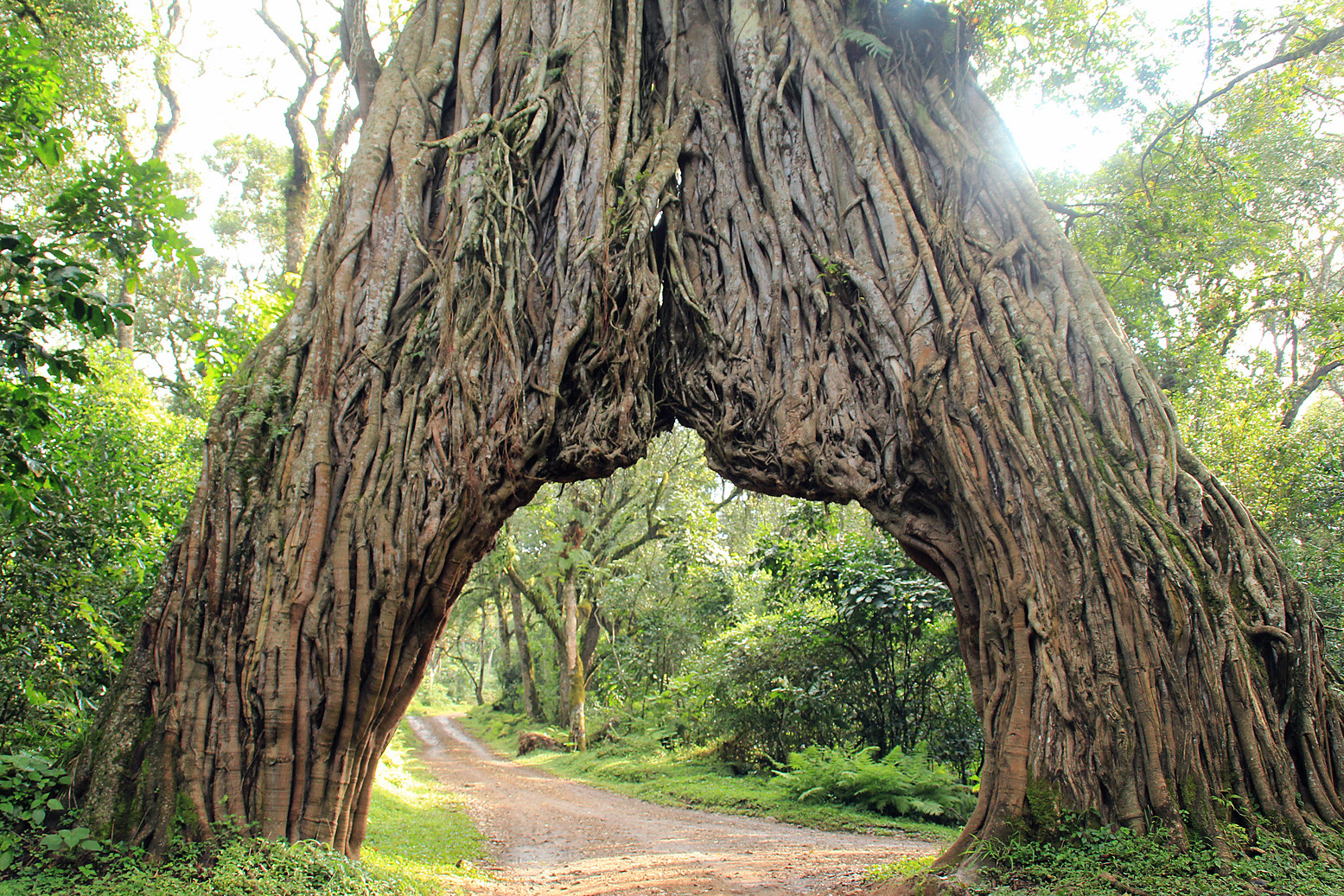
-
Tululusia Hill
Tululusia Hill, meaning “look out point,” is a prominent feature in Arusha National Park, offering panoramic views of the park’s diverse landscapes, including Mount Meru and, on clear days, Mount Kilimanjaro. The hill is renowned for its rich biodiversity, serving as a habitat for elephants, buffaloes, colobus monkeys, and the unique tree-dwelling pythons. A highlight of the area is the Tululusia Waterfall, a 28-meter cascade nestled within a narrow valley, providing a serene spot for visitors to relax and enjoy the natural surroundings. Exploring Tululusia Hill combines scenic vistas with opportunities to observe a variety of wildlife, making it a must-visit destination for nature enthusiasts.
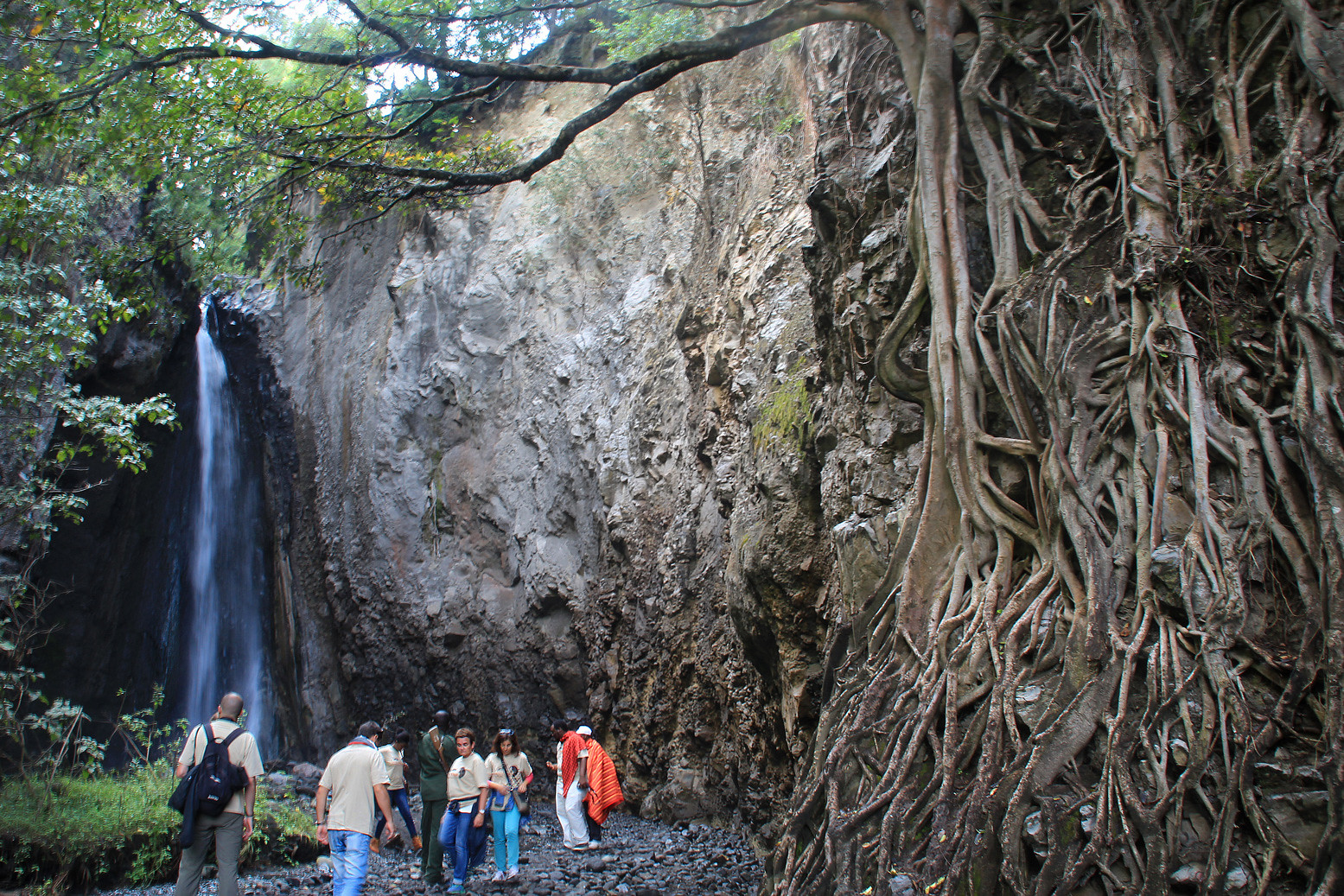
-
Ujambo Wa Mbogo
In Arusha National Park, “Ujambo wa Mbogo” (The Story of the Buffalo) resonates deeply with both the natural beauty and the cultural heritage of the region. The buffalo, a symbol of strength and resilience, is a prominent figure in the park’s diverse wildlife. These powerful animals can often be seen grazing in the park’s lush savannas and forested areas, where they embody the spirit of endurance and unity. In local folklore, the buffalo is revered for its protective nature, symbolizing community strength and the importance of standing firm in the face of adversity. Visitors to Arusha National Park are not only treated to stunning landscapes and diverse ecosystems but also to the cultural significance of the buffalo, a creature whose presence enriches both the natural world and the traditions of the people who call this land home.

-
Ngurdoto Museum
The Ngurdoto Museum, situated within Arusha National Park, offers visitors insights into the park’s rich biodiversity. The museum’s exhibits include a collection of butterflies, birds, and insects native to the region, providing educational value to guests. Additionally, the museum displays poachers’ snares, serving as a stark reminder of the challenges faced in wildlife conservation. Located near the Ngurdoto Crater, the museum is conveniently positioned for visitors exploring the park’s diverse ecosystems.

-
Birdwatching
Birdwatching in Arusha National Park is a paradise for bird enthusiasts, offering a diverse range of habitats that attract over 400 species of birds. From the lush forests around Momella Lakes to the open grasslands and the crater rim of Ngurdoto Crater, the park provides an ideal environment for observing both resident and migratory birds. Notable species include the vibrant yellow-collared lovebird, the African fish eagle, and the striking white-cheeked turaco. The park’s varied ecosystems—from wetlands to woodlands—ensure a rich diversity of birdlife, making it a must-visit destination for birdwatchers seeking an enriching experience amidst stunning natural landscapes.

What activities can visitors enjoy in Arusha National Park?
-
Game Drives

